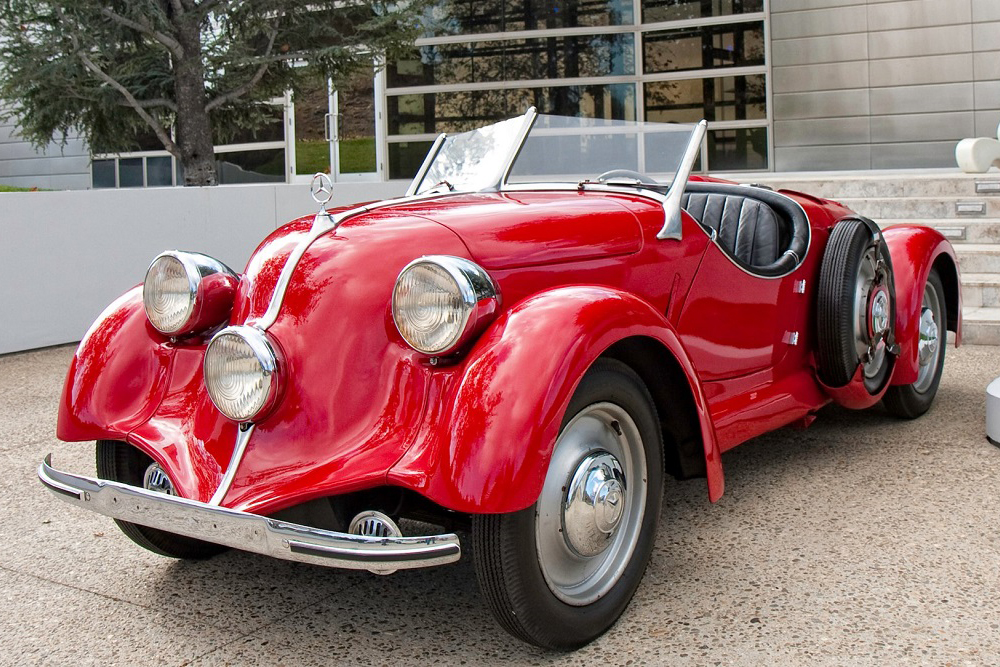Passenger cars, commercial vehicles, racing cars: Mercedes-Benz is a brand that can boast an extremely broad product range – and one that is highly diversified: in every decade, there have always been individual vehicles built for specific purposes. This is where Mercedes-Benz show some of the rarities that make up this extraordinary story.
Mercedes-Benz 150 sports roadster (W 30), 1934.
The Mercedes-Benz 150 sports roadster was the series version of the 150 sports saloon. With an open top and boasting an unusual design, this roadster is an invitation in itself to take it out for a spin.
However, the car was not a success. Experts are sure that only two of them were ever built. One of these is in the Mercedes-Benz Classic archive & vehicle collection.
Mercedes-Benz high-speed racing car transporter, 1955.

One of the stars sporting a Mercedes star has, since the 1950s, been the racing car high-speed transporter, whose task it was to transfer the racing cars as quickly as possible from the plant to European race tracks. The vehicle was created as a unique specimen with parts from Mercedes-Benz production vehicles: the sporty 300 S top model provided the X-tube frame. The engine came from the 300 SL Gullwing super sports car and the 180 mid-size saloon provided the doors. There were also many individually created components.
Daimler “Reitwagen” (riding carriage), 1885.
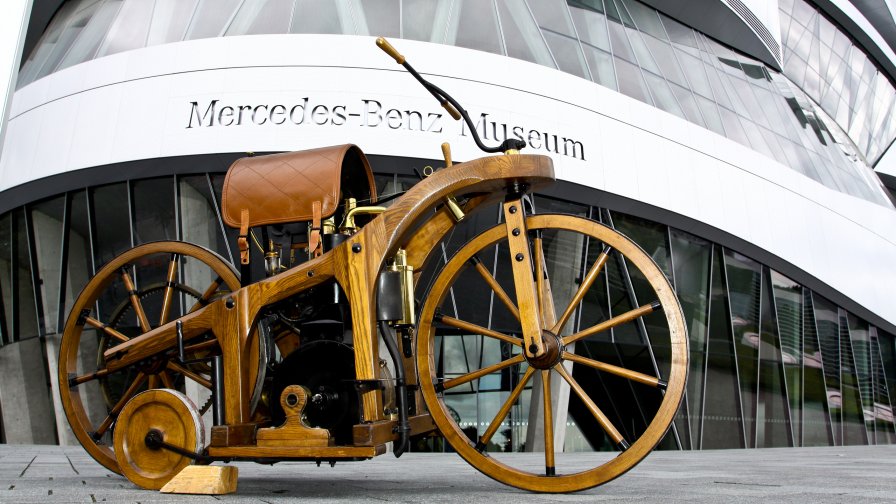
Only two wheels? But that’s a motorcycle! Quite right. However, this was not at all what Gottlieb Daimler had in mind when he launched the invention in 1885. At the time, it demonstrated very impressively that the newly invented combustion engine was suitable for powering a vehicle. Today the “riding carriage”, as it is aptly called, would be called a prototype. You can see it in Legends Room 1: “Pioneers – The invention of the motorcar” in the Mercedes-Benz Museum.
Mercedes-Benz 150 sports saloon (W 30), 1934.
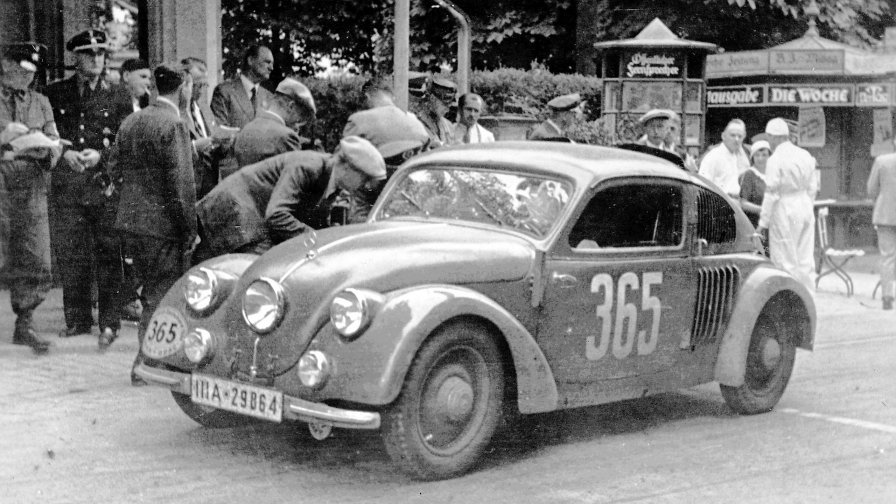
A sports car with a high-performance engine: that was the two-seater Mercedes-Benz 150 sports saloon car from 1934. 40 kW (55 PS) from a 1.5 litre engine was quite a remarkable output at that time. Another key feature was the mid-engine concept, which is still used today in sports cars and also in Formula One cars. The vehicle was used for the “2,000 kilometres through Germany” event. Four of the six 150 sports saloons received gold medals.
Mercedes-Benz 220 D “Stroke 8” pickup (W 115), 1973.

The Mercedes-Benz “Stroke 8” model series W 114/W 115, the predecessor of today’s E-Class, were extremely successful, with over 1.9 million saloons, long-wheelbase saloons, coupés and chassis being built between 1968 and 1976. Only very few of them were built as pickups. One of those is in the Mercedes-Benz Classic archive & vehicle collection.
Mercedes-Benz T 80 record car, 1939.
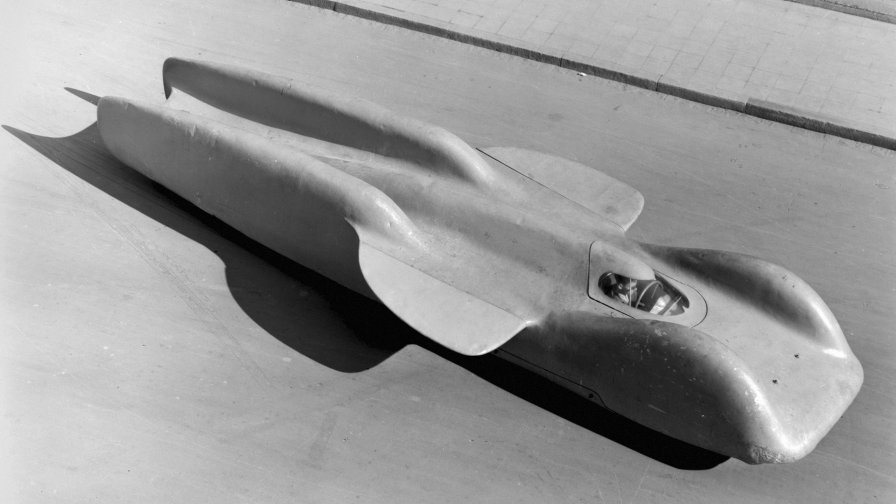
Fastest man on Earth: that’s what Hans Stuck wanted to be in 1939. To this end, the Mercedes-Benz T 80 was aiming for the 650 km/h mark. The record car was designed by Ferdinand Porsche. It was powered by an enormous twelve-cylinder 44.5-litre aircraft engine and had an output of up to 2574 kW (3,500 PS). But the T 80 was never used. The outbreak of the Second World War prevented the record attempt. Today, the original body can be seen in the “Fascination of Technology” section of the Mercedes-Benz Museum.
Mercedes-Benz W 125 for shooting sessions, 1962.
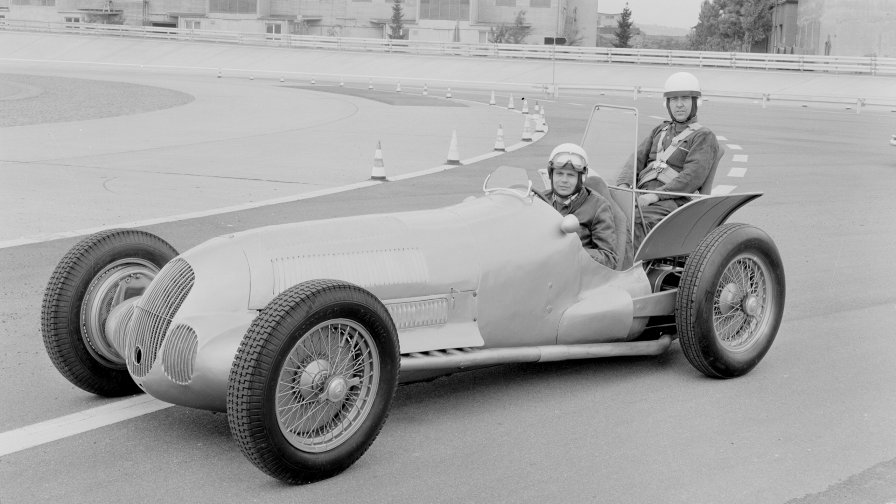
The Mercedes-Benz W 125 dominated international motorsport in 1937. Understandably, it was a single-seater. But in June 1962, there was a plan to shoot film sequences at breakneck speed from the car. For this purpose, one W 125 was fitted with an additional seat. The cameraman was seated high above the driver and held fast with a seat belt. Was this comfortable? That question was probably of secondary importance.
Mercedes-Benz SLX, 1965.

The Mercedes-Benz SLX project at the beginning of the 1960s was intended to play a major role: it was to be nothing less than a successor to the 300 SL Gullwing. In 1965, a breathtaking design in the style of an Italian gran turismo sports car was created. A full-scale mock-up was constructed from wood and this was even tested in a wind tunnel. But then the project was stopped. However, the wooden mock-up is still one of the rarest items in the company’s own collection of motorcars.
Mercedes-Benz Eurotunnel rescue vehicle, 1994.
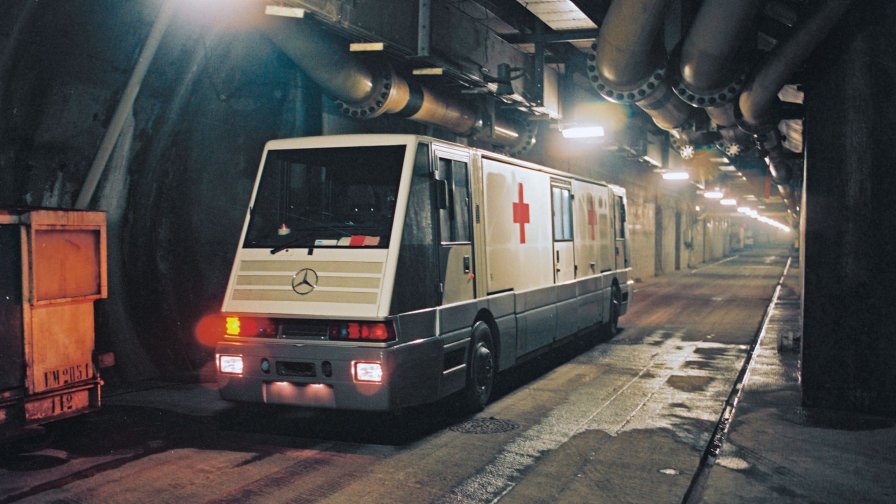
The Eurotunnel under the Channel was opened on 6 May 1994. Not only was this the longest underwater tunnel in the world, but no less than 24 special-purpose Mercedes-Benz vans were also commissioned for use. Automated by means of electronic track guidance, the vans run along the service tube between the railway tunnels. Since they cannot turn round in the confines of the tunnel, there are cabs at both ends. Swap containers mean the tailor-made vans can be used optionally as maintenance, fire-fighting or rescue vehicles.
Mercedes-Benz 190 E 2.6 Cabriolet prototype, 1990.
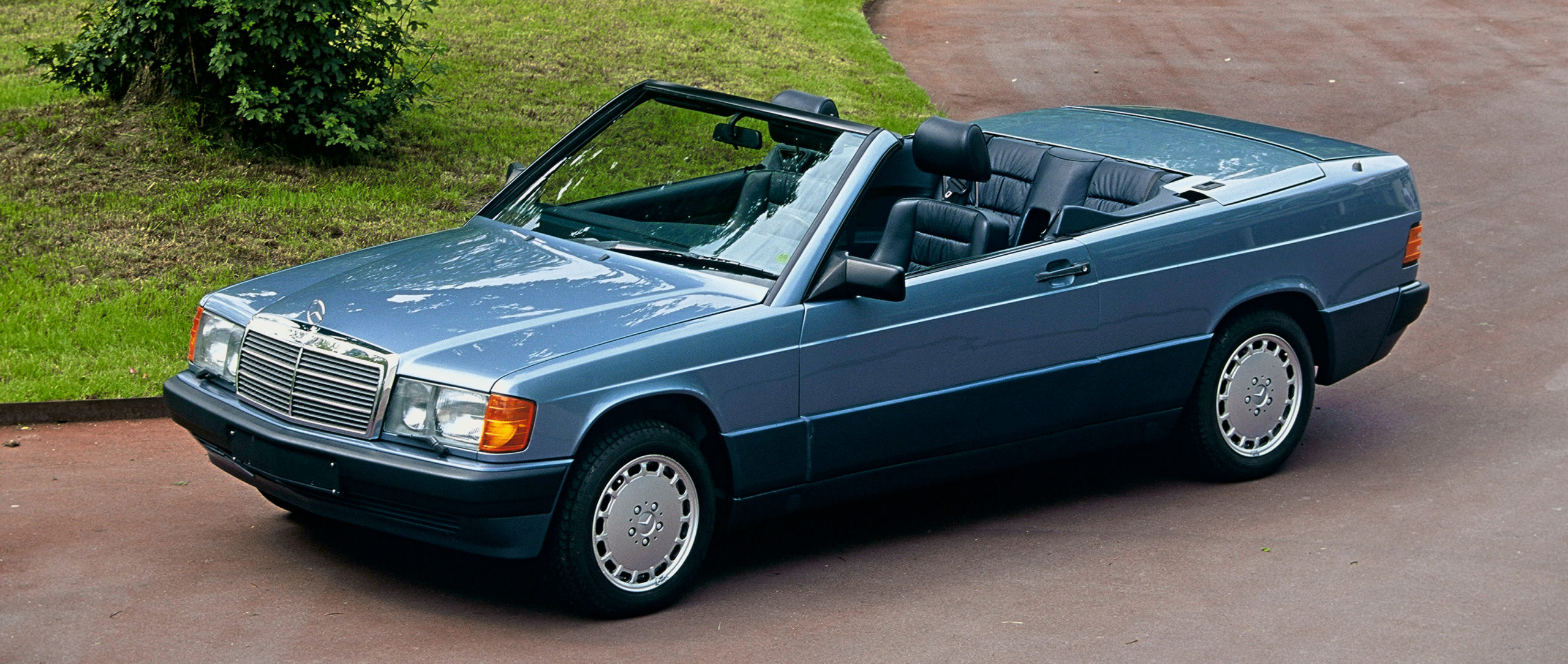
A four-seater cabriolet as a supplement to the successful W 201 model series: in the early 1990s, this was a brilliant idea from Mercedes-Benz. A drivable prototype with an extremely appealing body design was created.
However, the concept car never went into series production because Mercedes-Benz decided in favour of the 124 Cabriolet. The prototype is now in the Mercedes-Benz Classic collection.
Report by mercedes-benz.com

